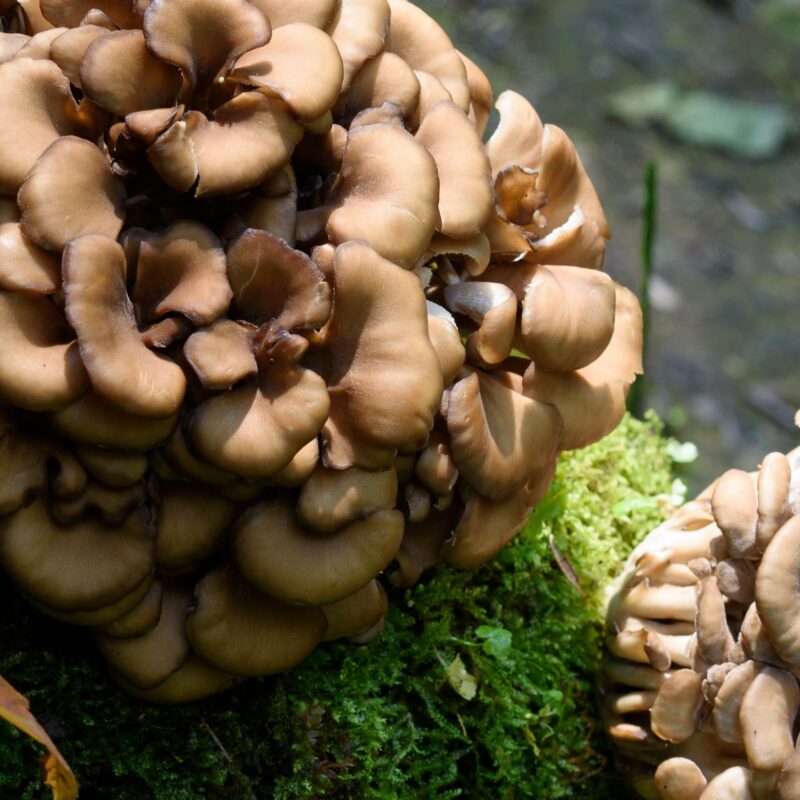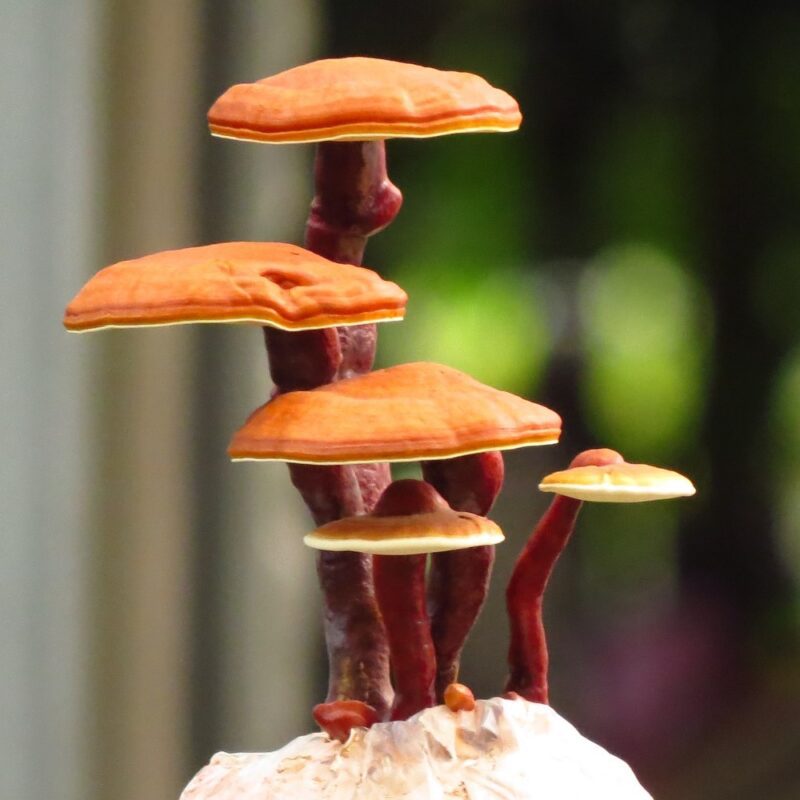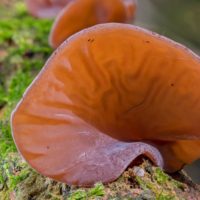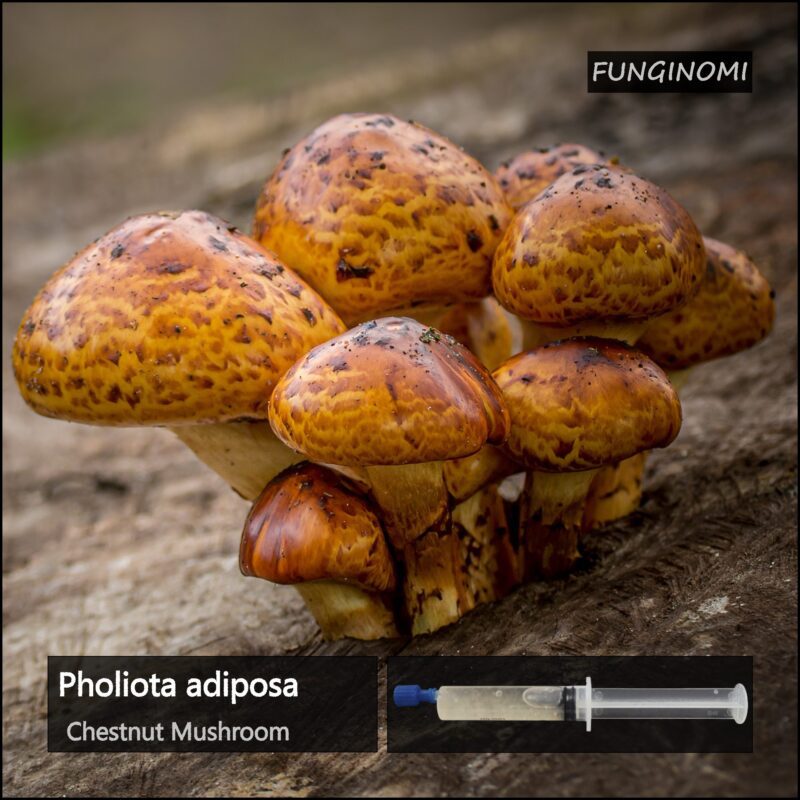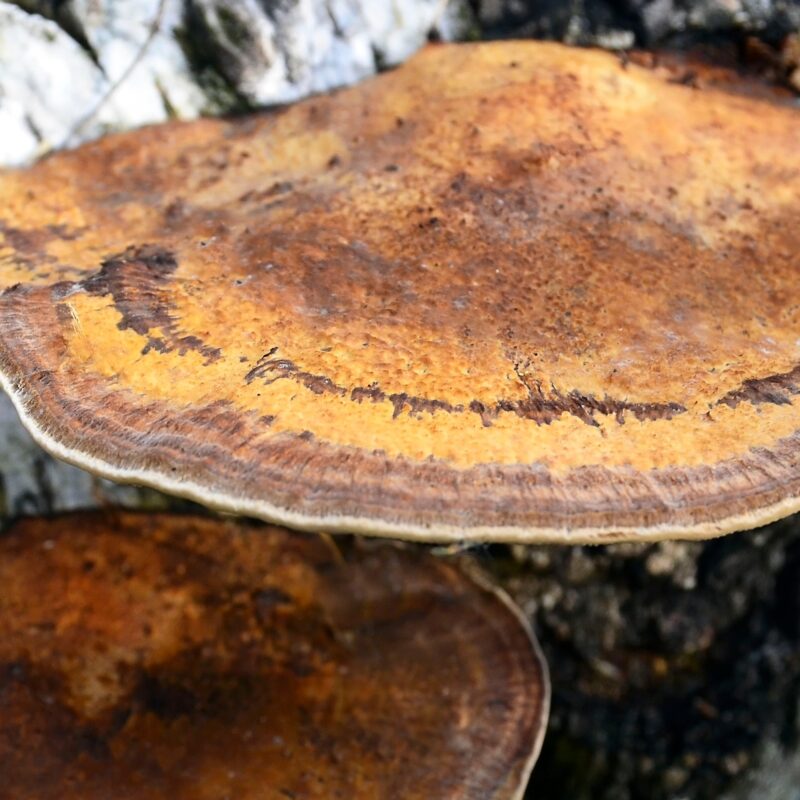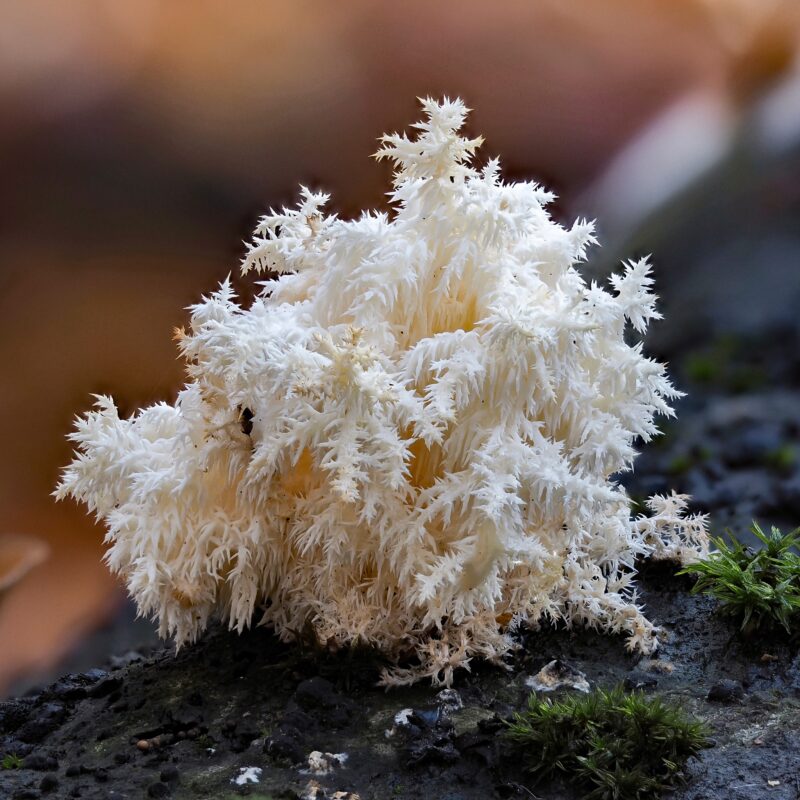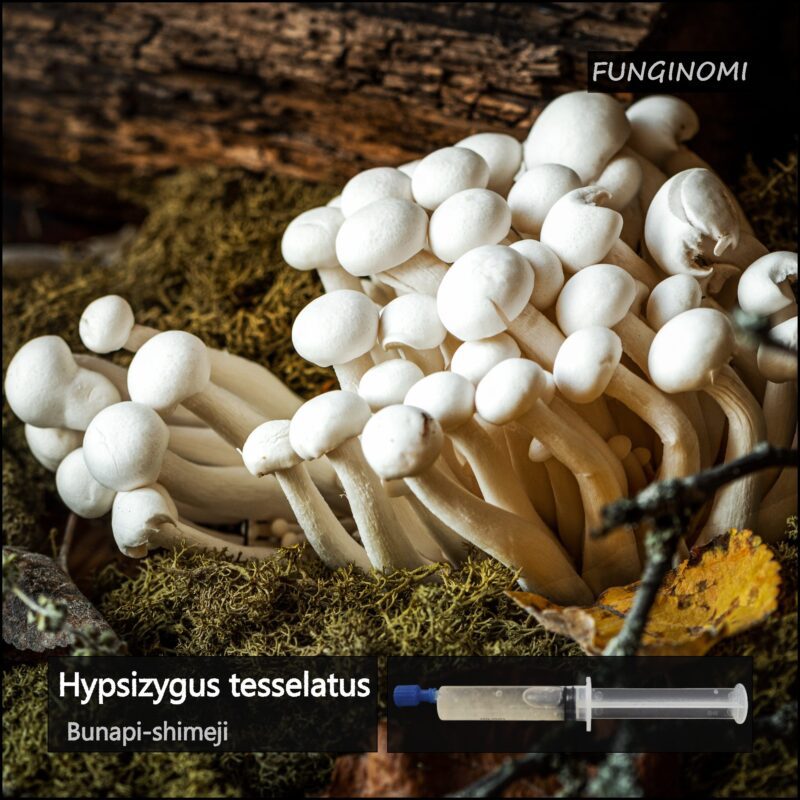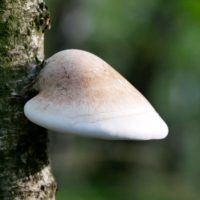A Comprehensive Guide to Mushroom Cultivation: Tips, Techniques, and Step-by-Step Instructions
Introduction to Mushroom Cultivation

Importance of mushroom cultivation and its increasing popularity
Importance of mushroom cultivation and its increasing popularity
Mushroom cultivation has gained increasing popularity in recent years due to its numerous benefits and the growing interest in home gardening. Cultivating mushrooms not only allows you to enjoy a fresh and nutrient-rich food source but also opens doors to a fascinating world of mycology. By understanding the importance of mushroom cultivation, you can embark on a rewarding journey of growing your own edible fungi right at home. Let’s explore why mushroom cultivation is capturing the attention of enthusiasts worldwide.
1. Nutritional Value: Mushrooms are not only delicious but also pack a powerful nutritional punch. They are low in calories and fat while being rich in vitamins, minerals, and antioxidants. Cultivating your own mushrooms ensures that you have a constant supply of fresh, healthy, and organic produce.
2. Medicinal Properties: Certain mushroom varieties, such as shiitake and reishi, have been recognized for their medicinal properties. They contain bioactive compounds that can boost the immune system, promote heart health, and even exhibit anticancer effects. Cultivating these medicinal mushrooms allows you to harness their potential health benefits for personal use.
3. Sustainable Practice: Growing mushrooms is an eco-friendly practice. Mushrooms are often cultivated using recycled agricultural waste, such as straw or sawdust. This helps reduce the strain on natural resources and minimizes waste. By engaging in mushroom cultivation, you contribute to a more sustainable food system.
4. Engaging Hobby: Mushroom cultivation offers a unique and engaging hobby for nature lovers and gardening enthusiasts. The process of cultivating mushrooms from spores or spawn to full-grown fruiting bodies is a captivating journey that allows you to connect with the natural world in a meaningful way. It’s a satisfying and rewarding experience to witness the fruits of your labor.
Conclusion: Understanding the importance of mushroom cultivation sheds light on why this practice has gained such widespread popularity. By growing your own mushrooms, you can enjoy their nutritional benefits, explore their potential medicinal properties, contribute to sustainability efforts, and engage in a fulfilling hobby. So, let’s dive into the fascinating world of mushroom cultivation and discover the techniques and tips that will help you succeed in your endeavor.
Benefits of growing mushrooms at home
Benefits of growing mushrooms at home
Growing mushrooms at home offers a range of benefits that make it a rewarding and worthwhile endeavor. Whether you’re a gardening enthusiast or simply interested in exploring the world of fungi, here are some key benefits of cultivating mushrooms in the comfort of your own home:
1. Fresh and Flavorful Harvest: One of the primary advantages of growing mushrooms at home is the ability to enjoy a fresh and flavorful harvest. Unlike store-bought mushrooms that may have been sitting on shelves for days, homegrown mushrooms can be harvested at their peak of freshness, ensuring superior taste and texture in your culinary creations.
2. Nutritional Value: Mushrooms are renowned for their nutritional value. They are low in calories, fat, and sodium while being rich in essential nutrients such as vitamins (e.g., B vitamins, vitamin D), minerals (e.g., potassium, selenium), and dietary fiber. By growing your own mushrooms, you have access to a nutrient-dense food source that can contribute to a healthy and balanced diet.
3. Variety and Exotic Species: Home cultivation allows you to explore a variety of mushroom species, including some that may be difficult to find in stores. You can experiment with different flavors, textures, and colors by cultivating popular varieties like button mushrooms, portobellos, or gourmet options such as oyster, shiitake, or lion’s mane mushrooms.
4. Cost Savings: Growing your own mushrooms can be a cost-effective alternative to purchasing them regularly. Mushroom kits or supplies for cultivation are often affordable and can yield multiple harvests. By producing your own mushrooms, you can reduce expenses and enjoy a sustainable source of this culinary delight.
5. Organic and Chemical-Free: When you grow mushrooms at home, you have control over the cultivation process, allowing you to opt for organic and chemical-free methods. You can choose quality substrates, avoid synthetic pesticides or fungicides, and ensure your mushrooms are free from unwanted chemicals, providing peace of mind regarding the food you consume.
6. Educational and Engaging: Mushroom cultivation is an educational and engaging hobby that offers continuous learning opportunities. Understanding the lifecycle of mushrooms, studying their mycelium growth, and observing the fruiting bodies can deepen your knowledge of mycology and foster a deeper appreciation for the natural world.
7. Sustainable Practice: Cultivating mushrooms at home promotes sustainability. Mushrooms can be grown using various agricultural waste materials such as straw, coffee grounds, or sawdust, which helps reduce waste and repurpose resources that might otherwise end up in landfills. Additionally, mushrooms are known for their ability to break down organic matter and contribute to nutrient cycling in ecosystems.
Conclusion:
Growing mushrooms at home provides a range of benefits, from enjoying fresh and flavorful harvests to reaping nutritional value and cost savings. It offers an opportunity to explore diverse mushroom species, engage in an educational hobby, and contribute to sustainability efforts. With these advantages in mind, it’s time to delve into the fascinating world of mushroom cultivation and unlock the secrets of growing your own delicious and nutritious fungi.
Understanding Mushroom Cultivation
What is Mushroom Cultivation?
Definition of mushroom cultivation
Mushroom cultivation refers to the deliberate and systematic cultivation of mushrooms for various purposes, such as food, medicinal use, research, or commercial production. It involves creating controlled environments that mimic the natural conditions required for mushrooms to grow and reproduce. By understanding the process of mushroom cultivation, you can unlock the secrets to successfully growing these fascinating fungi. Let’s delve deeper into the definition of mushroom cultivation and its key components:
1. Substrate Preparation: Mushroom cultivation begins with substrate preparation. The substrate refers to the material on which mushrooms grow, typically consisting of organic matter such as compost, straw, sawdust, or wood chips. The substrate provides nutrients and a suitable environment for the mycelium (the vegetative part of the mushroom) to colonize.
2. Spawn and Inoculation: Spawn acts as the “seed” for mushroom cultivation. It is a carrier material, such as grains or wood chips, that is colonized by the mycelium of a desired mushroom species. The mycelium is the thread-like network of cells that form the vegetative body of the fungus. During inoculation, the spawn is introduced into the prepared substrate, allowing the mycelium to propagate and colonize the substrate.
3. Incubation: After inoculation, the substrate is placed in a controlled environment known as the incubation chamber. This environment provides optimal conditions for the mycelium to grow and spread throughout the substrate. Factors such as temperature, humidity, and ventilation are carefully regulated during this stage to promote healthy mycelial growth.
4. Fruiting Stage: Once the mycelium has fully colonized the substrate, it is ready to enter the fruiting stage. Fruiting refers to the formation of mushroom fruiting bodies. To induce fruiting, specific conditions such as temperature, humidity, light exposure, and air circulation are adjusted based on the requirements of the cultivated mushroom species. This stage requires close monitoring and adjustments to ensure successful mushroom development.
5. Harvesting: Harvesting is the final stage of mushroom cultivation. It involves carefully harvesting the mature fruiting bodies when they reach the desired size and maturity. Proper harvesting techniques are employed to ensure minimal damage to the mushrooms and to preserve the integrity and quality of the crop.
6. Post-Harvest Handling: After harvesting, post-harvest handling is crucial to maximize the shelf life and quality of the mushrooms. This may include activities such as cleaning, sorting, packaging, and storing the harvested mushrooms under suitable conditions, depending on the specific requirements of the mushroom species.
Conclusion:
Mushroom cultivation is the purposeful and controlled process of growing mushrooms through substrate preparation, spawn inoculation, incubation, fruiting, harvesting, and post-harvest handling. By understanding the various stages and techniques involved in mushroom cultivation, you can embark on a rewarding journey of growing your own mushrooms and explore the diverse and captivating world of fungi.
Different types of mushrooms for cultivation
Mushroom cultivation encompasses a wide range of species, including both culinary and psychedelic varieties. Whether you’re interested in growing edible mushrooms or exploring the world of psychedelic fungi, here are some popular types of mushrooms that can be cultivated:
1. Button Mushrooms (Agaricus bisporus): Button mushrooms, also known as white mushrooms, are widely cultivated for culinary purposes. They have a mild flavor and versatile use in various dishes. Button mushrooms are typically grown on a substrate of compost or manure and require controlled temperature and humidity conditions for successful cultivation.
*2. Oyster Mushrooms (Pleurotus spp.): Oyster mushrooms are highly sought after for their delicate flavor and fast growth. They come in different colors, including white, yellow, and pink. Oyster mushrooms thrive on substrates such as straw or sawdust and can be cultivated at home with relative ease. They are popular in Asian cuisines and are rich in nutrients.
3. Shiitake Mushrooms (Lentinula edodes): Shiitake mushrooms are renowned for their robust, earthy flavor and meaty texture. They have been cultivated for centuries and are often used in various culinary dishes. Shiitake mushrooms grow best on hardwood logs or sawdust blocks and require specific temperature and humidity conditions for successful fruiting.
4. Portobello Mushrooms (Agaricus bisporus): Portobello mushrooms are mature, fully-grown button mushrooms that are known for their meaty texture and rich flavor. They have a distinct brown cap and are often used as a vegetarian alternative to burgers or grilled dishes. Portobello mushrooms are cultivated on a substrate of compost or manure and require specific environmental conditions for optimal growth.
5. Enoki Mushrooms (Flammulina velutipes): Enoki mushrooms, also called golden needle mushrooms, have long, slender stems and small button-like caps. They offer a mild and slightly fruity flavor along with a delicate, crunchy texture. Enoki mushrooms are typically grown on a substrate of straw or sawdust in a cool environment. They are commonly used in Asian cuisine, particularly in soups, stir-fries, and salads.
6. Lion’s Mane Mushrooms (Hericium erinaceus): Lion’s Mane mushrooms are distinct with their white, shaggy appearance resembling a lion’s mane. They have a mild, seafood-like flavor and a unique texture. Lion’s Mane mushrooms are cultivated on hardwood logs or sawdust blocks and require specific temperature and humidity conditions for successful fruiting. They are valued for potential cognitive and neurological benefits.
7. Magic Mushrooms (Psilocybin Mushrooms): Magic mushrooms, or psilocybin mushrooms, are a group of fungi that contain the psychoactive compound psilocybin. These mushrooms have been traditionally used for ceremonial, spiritual, or recreational purposes. Cultivating magic mushrooms typically involves species such as Psilocybe cubensis or Psilocybe semilanceata. They require specific substrates and environmental conditions to promote the growth of psilocybin-producing mushrooms.
Conclusion:
Mushroom cultivation offers a diverse range of species to explore, from culinary favorites like button mushrooms and shiitake mushrooms to exotic varieties like lion’s mane. Additionally, for those interested in the psychedelic realm, the cultivation of magic mushrooms provides an avenue to grow and experience the effects of psilocybin-containing fungi. By understanding the unique requirements of each mushroom type, you can embark on an exciting journey of cultivating mushrooms that suit your culinary or personal interests.
Importance of choosing the right mushroom species
Selecting the appropriate mushroom species for cultivation is crucial for achieving successful and rewarding results. Each mushroom species has specific requirements and characteristics that influence its growth, cultivation techniques, flavors, and potential uses. Here are the key reasons why choosing the right mushroom species is of utmost importance:
1. Adaptability to Cultivation Conditions: Different mushroom species have varying adaptability to specific cultivation conditions. Factors such as temperature, humidity, substrate preferences, and light requirements can significantly affect the growth and fruiting of mushrooms. By choosing a species that aligns with the available resources and environmental conditions, you increase the likelihood of a thriving cultivation process.
2. Personal Preferences and Culinary Uses: The choice of mushroom species depends on your personal preferences and intended culinary uses. Each species possesses unique flavors, textures, and culinary characteristics. Some mushrooms may be more suitable for sautéing, grilling, or incorporating into soups and stews, while others may have specific culinary applications due to their distinct taste profiles. Selecting the right species ensures that you cultivate mushrooms that align with your desired culinary experiences.
3. Skill Level and Cultivation Experience: Consider your skill level and cultivation experience when choosing a mushroom species. Some species, such as button mushrooms or oyster mushrooms, are generally more beginner-friendly, while others may require more advanced techniques or specific conditions. Starting with a species that matches your level of expertise allows for a smoother learning curve and increases the chances of successful cultivation.
4. Availability of Resources and Substrates: Different mushroom species have varying substrate preferences. Some mushrooms thrive on agricultural waste materials like straw, while others prefer hardwood logs or sawdust. By considering the availability of resources and substrates in your region, you can select a mushroom species that can be cultivated using accessible and cost-effective materials, reducing potential challenges and expenses.
5. Time and Growth Rate: Mushroom species exhibit different growth rates and timeframes from inoculation to harvest. Some species, like oyster mushrooms, have relatively fast growth and can yield multiple flushes within a shorter period. Others, such as shiitake mushrooms, have a longer growth cycle and require more patience. Understanding the time commitment and growth characteristics of different species enables you to plan your cultivation activities accordingly.
6. Specific Uses and Benefits: Certain mushroom species are known for their specific medicinal properties, unique flavors, or aesthetic appeal. For example, lion’s mane mushrooms are valued for their potential cognitive benefits, while reishi mushrooms are sought after for their immune-boosting properties. By selecting a species with specific uses or desired health benefits, you can cultivate mushrooms that align with your intended purposes.
Conclusion:
Choosing the right mushroom species is a critical step in successful cultivation. It ensures compatibility with cultivation conditions, aligns with personal preferences and culinary uses, matches your skill level, considers resource availability, factors in growth rates, and targets specific uses or benefits. By carefully selecting the appropriate mushroom species, you set the foundation for a rewarding and fulfilling cultivation journey that yields the desired results and meets your unique objectives.
Benefits of Mushroom Cultivation
Health benefits of consuming mushrooms
Mushroom cultivation not only provides the joy of growing your own food but also offers numerous health benefits through the consumption of these fascinating fungi. Incorporating mushrooms into your diet can contribute to overall well-being and support a healthy lifestyle. Here are the key health benefits associated with consuming mushrooms:
1. Nutritional Value: Mushrooms are nutrient-rich and provide a range of essential vitamins, minerals, and antioxidants. They are low in calories and fat while being a good source of dietary fiber. Mushrooms contain B vitamins, including riboflavin (vitamin B2) and niacin (vitamin B3), as well as minerals like potassium, copper, and selenium. These nutrients are vital for various bodily functions and can contribute to overall health and vitality.
2. Immune System Support: Certain mushrooms, such as shiitake and reishi, have been traditionally used for their immune-boosting properties. They contain bioactive compounds, including polysaccharides and beta-glucans, which have shown potential in enhancing immune function and promoting a healthy immune response. Regular consumption of immune-supportive mushrooms may help strengthen the body’s defense mechanisms.
3. Antioxidant Protection: Mushrooms are known to possess antioxidant properties, which help combat oxidative stress and neutralize harmful free radicals in the body. Antioxidants play a crucial role in reducing the risk of chronic diseases, including heart disease, certain cancers, and age-related conditions. Varieties such as oyster mushrooms and porcini mushrooms are particularly rich in antioxidants.
4. Cardiovascular Health: Incorporating mushrooms into a heart-healthy diet may contribute to cardiovascular health. Mushrooms are naturally low in sodium and contain negligible amounts of cholesterol. They are a good source of dietary fiber, which can aid in maintaining healthy cholesterol levels. Additionally, certain mushroom species, such as shiitake mushrooms, have been studied for their potential to support heart health.
5. Weight Management: Mushrooms can be a valuable addition to a weight management or weight loss regimen. They are low in calories and fat while providing a satisfying texture and flavor to meals. By incorporating mushrooms into recipes, you can create nutritious, filling dishes with reduced caloric content. Their high fiber content can also contribute to improved satiety and enhanced digestive health.
6. Potential Anti-Cancer Properties: Some mushroom species exhibit potential anti-cancer properties and have been the subject of scientific research. For instance, certain mushrooms like shiitake, maitake, and reishi contain bioactive compounds that have shown promising results in inhibiting tumor growth, enhancing the immune response against cancer cells, and reducing inflammation. However, further studies are needed to fully understand their effects.
7. Cognitive Health: Lion’s mane mushrooms, in particular, have gained attention for their potential to support cognitive health. They contain compounds that may promote the production of nerve growth factors in the brain, which are essential for the growth and maintenance of brain cells. Consumption of lion’s mane mushrooms has been associated with potential benefits for memory, focus, and overall brain function.
Conclusion:
Mushroom cultivation offers not only the joy of growing your own food but also the opportunity to enjoy a wide array of health benefits through mushroom consumption. Mushrooms are nutrient-rich, support immune function, provide antioxidant protection, promote cardiovascular health, aid in weight management, exhibit potential anti-cancer properties, and may contribute to cognitive well-being. By incorporating mushrooms into your diet, you can savor their flavors while nourishing your body and supporting overall health.
Economic advantages of growing mushrooms
In addition to their health benefits, growing mushrooms can offer several economic advantages for individuals and communities. Whether you’re considering small-scale cultivation for personal use or exploring larger commercial ventures, here are the key economic benefits of growing mushrooms:
1. High Market Demand: Mushrooms have gained significant popularity and enjoy a high market demand due to their culinary versatility, nutritional value, and unique flavors. They are sought after by restaurants, specialty food stores, farmers’ markets, and consumers looking to incorporate healthy and flavorful ingredients into their meals. The growing interest in gourmet and exotic mushrooms presents opportunities for mushroom growers to cater to niche markets and command premium prices.
2. Year-Round Cultivation: Mushrooms can be cultivated indoors in controlled environments, allowing for year-round cultivation regardless of seasonal limitations. Unlike many traditional crops, mushrooms are not dependent on specific weather conditions or sunlight. This flexibility enables growers to have a consistent supply of fresh mushrooms throughout the year, providing a steady income stream.
3. Rapid Growth and High Yield: Compared to many other agricultural crops, mushrooms have a rapid growth rate and offer high yields within a relatively short period. Depending on the mushroom species and cultivation techniques, growers can expect their first harvest within weeks or months. This quick turnaround time allows for multiple crop cycles, maximizing the production potential and income generation.
4. Utilization of Small Spaces: Mushroom cultivation can be carried out in compact spaces, making it suitable for individuals with limited land or urban settings. Mushrooms can be grown in containers, shelves, or even in unused buildings or basements. This small-scale cultivation option reduces the need for large land areas and capital investments typically associated with traditional farming, making it accessible to a wider range of aspiring growers.
5. Cost-Effective Production: The production costs of mushroom cultivation are generally lower compared to many other agricultural activities. Mushrooms can be cultivated using locally available substrates such as agricultural waste, straw, sawdust, or spent coffee grounds, minimizing input costs. Additionally, the efficient use of space, the ability to recycle substrates, and the potential for year-round cultivation contribute to cost-effectiveness and favorable profit margins.
6. Value-Added Products: Apart from selling fresh mushrooms, growers can explore value-added product options to expand their revenue streams. Dried mushrooms, mushroom powders, extracts, mushroom-based sauces or condiments, and mushroom spawn for other growers are examples of value-added products that can be created from harvested mushrooms. These products have longer shelf lives and can be sold at higher prices, further enhancing the economic potential.
7. Job Creation and Local Economy: Scaling up mushroom cultivation operations can have a positive impact on local economies by generating job opportunities. Commercial mushroom farms require labor for tasks such as cultivation, harvesting, packaging, and distribution. By creating employment opportunities, mushroom cultivation contributes to livelihoods and economic growth within communities.
Conclusion:
Growing mushrooms offers compelling economic advantages such as high market demand, year-round cultivation potential, rapid growth and high yields, utilization of small spaces, cost-effective production, value-added product options, and job creation. Whether as a small-scale endeavor or a larger commercial operation, mushroom cultivation can be a profitable venture that provides sustainable income and contributes to local economies.
Environmental benefits of mushroom cultivation
Mushroom cultivation not only offers economic advantages but also presents several environmental benefits. The unique characteristics of mushrooms and the cultivation techniques involved contribute to sustainable practices and positive environmental impacts. Here are the key environmental benefits of mushroom cultivation:
1. Recycling Agricultural Waste: Mushroom cultivation provides an opportunity to recycle agricultural waste materials such as straw, sawdust, corn stalks, and cottonseed hulls. These waste materials, which would otherwise be discarded or burned, can serve as valuable substrates for mushroom growth. By utilizing agricultural waste as a substrate, mushroom growers reduce the environmental burden associated with waste disposal and contribute to a more sustainable agricultural system.
2. Carbon Sequestration: Mushrooms are unique organisms that have the ability to convert organic waste into fungal biomass. During their growth, mushrooms absorb and sequester carbon from the substrate they are cultivated on. This process contributes to carbon sequestration and helps mitigate the impacts of climate change by reducing greenhouse gas emissions in the atmosphere.
3. Water Conservation: Mushroom cultivation is relatively water-efficient compared to many other agricultural practices. The growth requirements of mushrooms often involve maintaining specific humidity levels, reducing the need for excessive irrigation. Additionally, the substrate used for cultivation retains moisture well, minimizing water consumption. By practicing water conservation in mushroom cultivation, growers contribute to the responsible use of this valuable resource.
4. Natural Pest and Disease Control: Some mushroom species, such as oyster mushrooms, possess natural pest- and disease-controlling properties. They produce enzymes and compounds that can inhibit the growth of certain plant pathogens and pests. By incorporating these beneficial fungi into agricultural systems, growers can reduce reliance on synthetic pesticides and promote biological pest control methods, thereby minimizing potential harm to the environment and ecosystem.
5. Soil Health and Regeneration: Mushroom cultivation can contribute to soil health and regeneration. The spent mushroom substrate, also known as mushroom compost or spent mushroom blocks, is rich in organic matter and nutrients. When added to soil, it improves its structure, fertility, and water-holding capacity. The decomposition of the substrate further enhances microbial activity and soil biodiversity. By utilizing spent mushroom substrate as soil amendment, growers enhance the overall health and sustainability of agricultural lands.
6. Biodiversity Conservation: Mushrooms play a vital role in ecosystem functioning and contribute to biodiversity conservation. They participate in nutrient cycling, decompose organic matter, and form symbiotic relationships with other plants and organisms. By cultivating mushrooms, growers support the natural diversity of fungi and contribute to the preservation of ecosystems and habitats where these fungi thrive.
Conclusion:
Mushroom cultivation offers significant environmental benefits by recycling agricultural waste, promoting carbon sequestration, conserving water, facilitating natural pest and disease control, enhancing soil health and regeneration, and contributing to biodiversity conservation. Incorporating mushroom cultivation into sustainable agricultural practices can help reduce the environmental impact of food production, promote resource efficiency, and support a more resilient and environmentally conscious approach to farming.
Essential Equipment and Materials
Choosing the Right Growing Environment
Indoor vs. outdoor cultivation
Indoor Cultivation:
- Advantages: Indoor cultivation provides greater control over environmental factors such as temperature, humidity, and light. It allows for year-round cultivation, independent of seasonal changes. Indoor setups are typically more protected from pests, diseases, and environmental fluctuations. They also require less space and can be adapted to small-scale or urban settings.
- Considerations: Indoor cultivation requires initial investment in equipment and infrastructure for maintaining the desired growing conditions. Energy consumption for lighting and climate control should be taken into account. Additional attention may be needed to maintain cleanliness and prevent contamination in enclosed spaces.
Outdoor Cultivation:
- Advantages: Outdoor cultivation can utilize natural light and environmental conditions, reducing energy costs. It allows for larger-scale cultivation and the potential for higher yields. Outdoor environments may offer natural pest control and beneficial microbial interactions. Certain mushroom species, like morel mushrooms, thrive best in outdoor settings.
- Considerations: Outdoor cultivation is subject to seasonal limitations and weather fluctuations, requiring careful timing and adaptation to local climates. It is more exposed to pests, diseases, and competing organisms. Adequate land availability and access to suitable outdoor spaces are necessary.
Conclusion:
To embark on a successful mushroom cultivation journey, ensure you have the essential equipment and materials including growing containers, substrate, spawn, sterilization equipment, misting system or spray bottle, lighting, and ventilation. The choice between indoor and outdoor cultivation depends on factors such as desired control, available space, energy…
Factors to consider when selecting a growing space
Choosing the right growing space is crucial for successful mushroom cultivation. Several factors should be considered to create an optimal environment for mushroom growth. Here are the key factors to keep in mind when selecting a growing space:
1. Temperature: Mushrooms have specific temperature requirements for optimal growth. Different mushroom species thrive at different temperature ranges. It is important to select a growing space that allows for temperature control within the desired range. Consider the ambient temperature, insulation, and availability of heating or cooling options to maintain the ideal temperature conditions.
2. Humidity: Mushrooms require a high humidity environment to flourish. The selected growing space should have the capacity to maintain and control humidity levels. Factors such as ventilation, misting systems, and water sources should be considered to ensure proper humidity for mushroom growth.
3. Light: While mushrooms do not rely on direct sunlight for growth, lighting is still important for their development. Natural light or artificial grow lights can be utilized to provide the necessary light spectrum. Consider the availability of natural light, electrical infrastructure for artificial lighting, and the ability to control light exposure in the selected growing space.
4. Air Quality: Good air quality is essential for healthy mushroom growth. The growing space should have adequate ventilation to ensure proper air exchange. Proper airflow helps regulate carbon dioxide levels, prevent the buildup of harmful gases, and facilitate the exchange of gases required for mushroom metabolism. Consider the presence of windows, vents, or fans to promote airflow and maintain optimal air quality.
5. Contamination Control: Maintaining a clean and contamination-free environment is crucial for successful mushroom cultivation. Choose a growing space that minimizes the risk of contamination from pests, airborne spores, or competing fungi. Consider factors such as cleanliness, proximity to potential sources of contamination, and the ability to implement proper sterilization and sanitation practices.
6. Space Availability: The available space should be appropriate for the scale of cultivation you intend to pursue. Consider the required space for growing containers, shelving or racks, equipment, and maneuverability. Ensure that there is ample room for proper air circulation and easy access for maintenance and harvesting.
7. Accessibility and Convenience: Select a growing space that is easily accessible and convenient for regular monitoring, maintenance, and harvesting activities. Consider factors such as proximity to water sources, electrical outlets, and storage areas for supplies and equipment. An accessible growing space simplifies the cultivation process and ensures efficient management.
8. Future Expansion: If you have plans for expanding your mushroom cultivation operation, consider the potential for future expansion in the selected growing space. Assess whether there is room to accommodate increased production capacity, additional equipment, and potential infrastructure upgrades.
Conclusion:
When selecting a growing space for mushroom cultivation, consider factors such as temperature control, humidity, lighting, air quality, contamination control, available space, accessibility, and potential for future expansion. Carefully assessing these factors will help create an optimal growing environment for successful mushroom cultivation and maximize your chances of a fruitful harvest.
Required Equipment and Supplies
List of essential equipment for mushroom cultivation
To successfully cultivate mushrooms, you will need a range of essential equipment and supplies. Here is a list of the required equipment for mushroom cultivation:
- Growing Containers: These containers can include plastic bags, trays, or cultivation bags, depending on your preferred cultivation method. Make sure they are durable, breathable, and capable of retaining moisture.
- Substrate: The substrate serves as the growing medium for mushrooms. Common substrates include materials like straw, wood chips, sawdust, coffee grounds, or agricultural waste. Ensure you have a sufficient amount of substrate for your cultivation project.
- Spawn: Mushroom spawn consists of the mycelium, the vegetative part of the fungus, and serves as the inoculum. It can be obtained from reliable suppliers or generated through spawn production techniques.
- Sterilization Equipment: Sterilization is essential to eliminate contaminants from the substrate and containers. Equipment such as pressure cookers or autoclaves will be needed to sterilize the materials effectively.
- Misting System or Spray Bottle: Mushrooms require a humid environment for proper growth. A misting system or spray bottle will help maintain the necessary humidity levels by providing regular moisture to the growing area.
- Lighting: While mushrooms don’t require direct sunlight, they benefit from indirect lighting. Depending on your cultivation setup, you may need artificial grow lights or access to ambient natural light.
- Ventilation Equipment: Good ventilation is crucial to maintain proper airflow and gas exchange. Fans, air filters, or vents can be used to ensure adequate ventilation within the growing space.
- Cleaning and Sanitization Supplies: Keeping your cultivation area clean and free from contaminants is essential. Stock up on cleaning supplies such as disinfectants, gloves, and clean cloths to maintain proper hygiene.
- pH Testing Kit: Mushrooms have specific pH requirements for optimal growth. A pH testing kit will help you monitor and adjust the pH levels of your substrate and growing environment as needed.
- Thermometer and Hygrometer: Monitoring the temperature and humidity levels is crucial for successful cultivation. Invest in a reliable thermometer and hygrometer to track and maintain the ideal conditions for your mushrooms.
- Spray Bottles and Watering Cans: You will need spray bottles or watering cans to apply water or other liquid solutions to the substrate and maintain proper moisture levels.
- Harvesting Tools: As your mushrooms mature, you will need tools such as a sharp knife or scissors to properly harvest them without damaging the mycelium or other growing parts.
Remember, the specific equipment and supplies required may vary depending on your chosen cultivation method and the type of mushrooms you are growing. It’s important to research and adapt the equipment list to meet your specific needs and ensure successful mushroom cultivation.
Mushroom Cultivation Techniques
Spore Selection and Procurement
Importance of high-quality spawn
In the realm of mushroom cultivation, the importance of high-quality spawn cannot be overstated. Spawn serves as the inoculum, containing the mycelium necessary to initiate mushroom growth. When it comes to spawn selection and procurement, opting for high-quality spawn is crucial for successful and productive mushroom cultivation. Here’s why high-quality spawn is of utmost importance:
1. Genetic Purity: High-quality spawn ensures genetic purity in your mushroom cultivation. Spawn obtained from reliable sources or reputable suppliers guarantees that it comes from a specific mushroom strain or variety. Genetic purity is vital for preserving the desired characteristics, flavor profiles, and growth habits of the mushrooms you wish to cultivate. By selecting high-quality spawn, you can maintain the integrity and consistency of your cultivated mushrooms.
2. Vigorous Mycelial Growth: High-quality spawn contributes to vigorous and robust mycelial growth. Mycelium is the vegetative part of the fungus, and healthy mycelial growth is essential for efficient colonization of the substrate and optimal mushroom production. High-quality spawn contains active and viable mycelium that can quickly colonize the substrate, leading to faster and more vigorous growth. This ultimately translates into higher yields and shorter cultivation cycles.
3. Disease Resistance: Opting for high-quality spawn reduces the risk of introducing diseases or contaminants into your mushroom cultivation environment. Reputable suppliers or experienced cultivators take stringent measures to ensure their spawn is free from contaminants, pests, or harmful pathogens. Disease-resistant spawn minimizes the chances of infections or the spread of harmful organisms, contributing to the overall health and success of your mushroom crop.
4. Consistency and Reliability: High-quality spawn offers consistency and reliability in your cultivation efforts. Reputable spawn suppliers often provide detailed information on the performance, growth requirements, and optimal cultivation techniques for the strains they offer. This information allows you to follow established protocols, replicate successful cultivation outcomes, and achieve consistent results. By using high-quality spawn, you can rely on proven performance and increase your chances of a successful harvest.
5. Adaptability and Performance: High-quality spawn is known for its adaptability and performance in various cultivation conditions. Certain mushroom strains or varieties exhibit specific growth habits or preferences, and high-quality spawn ensures that these traits are maintained. Whether you are cultivating mushrooms indoors or outdoors, on different substrates, or under specific environmental conditions, high-quality spawn is more likely to adapt and perform optimally, maximizing your chances of successful cultivation.
6. Research and Development: High-quality spawn plays a crucial role in research and development endeavors within the field of mushroom cultivation. Researchers, scientists, and breeders rely on high-quality spawn to study genetic traits, develop new varieties, and advance cultivation techniques. By utilizing high-quality spawn, you contribute to the exploration and development of innovative approaches and the expansion of knowledge in the field.
Conclusion:
Selecting and procuring high-quality spawn is vital for successful mushroom cultivation. High-quality spawn ensures genetic purity, promotes vigorous mycelial growth, enhances disease resistance, provides consistency and reliability, exhibits adaptability and performance, and supports research and development efforts. When obtaining spawn, choose reputable suppliers or experienced cultivators to ensure the quality, integrity, and optimal performance of the spawn. By starting with high-quality spawn, you lay the foundation for a successful and productive mushroom cultivation journey.
Mushroom Substrate Preparation
Overview of different substrate options (e.g., straw, sawdust, compost)
Mushroom cultivation relies on the preparation of a suitable substrate that serves as the nutrient-rich growing medium for the mushrooms. Various substrate options are available, each with its unique characteristics and suitability for different mushroom species. Here’s an overview of some commonly used substrate options:
- Straw: Straw is a popular substrate choice for many mushroom species, including oyster mushrooms and certain varieties of shiitake mushrooms. It is affordable, readily available, and easy to work with. Straw can be used in its natural form or chopped into smaller pieces. Proper conditioning, which involves soaking and pasteurizing the straw, is necessary to remove competing organisms and create an ideal environment for mushroom mycelium colonization.
- Sawdust: Sawdust is a versatile substrate option suitable for several mushroom species, such as shiitake, lion’s mane, and various wood-loving mushrooms. It provides a high surface area for mycelium colonization and supports robust mushroom fruiting. Sawdust can be obtained from hardwood or softwood sources and requires sterilization or pasteurization to eliminate contaminants and create a favorable environment for mushroom growth.
- Wood Chips: Wood chips are commonly used for cultivating wood-loving mushrooms, such as shiitake or oyster mushrooms. They are typically obtained from hardwood trees and can be a byproduct of tree pruning or lumber operations. Wood chips provide a long-lasting substrate that allows for multiple mushroom harvests over time. Proper sterilization or pasteurization is essential to control competing fungi and ensure successful colonization by the desired mushroom mycelium.
- Compost: Compost is a nutrient-rich substrate made from organic materials, such as agricultural waste, yard trimmings, or manure. It is commonly used for growing species like button mushrooms or portobello mushrooms. Composting involves the decomposition and microbial breakdown of the organic materials, creating a favorable environment for mushroom mycelium to colonize. The composting process generates heat, which helps eliminate pathogens and create a sterile substrate suitable for mushroom cultivation.
- Coffee Grounds: Coffee grounds can be repurposed as a substrate for growing certain mushroom species, such as oyster mushrooms. They are readily available and provide a source of nutrients for the mushrooms. Coffee grounds should be pasteurized to control potential contaminants and create a favorable environment for mycelium colonization. Mixing coffee grounds with other materials like sawdust or straw can enhance the substrate’s texture and nutrient content.
- Manure: Some mushroom species, like the popular psilocybin-containing magic mushrooms, can be cultivated on nutrient-rich manure-based substrates. Horse, cow, or poultry manure can be used as a substrate component. Manure should be properly composted or fermented to eliminate pathogens and create an optimal substrate for mushroom growth. Careful attention to temperature and moisture levels is necessary when working with manure-based substrates.
When selecting a substrate for mushroom cultivation, consider the specific requirements of the mushroom species you intend to grow. Factors such as moisture content, nutrient composition, pH levels, and the ability to sterilize or pasteurize the substrate should be taken into account. Each substrate option requires specific preparation techniques to create an environment conducive to mushroom mycelium colonization and fruiting. Experimentation and experience will help you determine the most suitable substrate option for your desired mushroom species and cultivation goals.
Steps for preparing and sterilizing the substrate
- Substrate Selection: Choose the appropriate substrate for your mushroom species, considering factors such as availability, compatibility, and desired cultivation outcomes. Common substrate options include straw, sawdust, compost, wood chips, coffee grounds, or manure-based mixtures.
- Preparation: Depending on the substrate, prepare it by chopping, shredding, or soaking to achieve the desired texture and moisture content. For example, straw may need to be chopped into smaller pieces, while sawdust may require soaking to increase its moisture content.
- Supplementing: Some substrates may benefit from supplementation with additional nutrients. This can involve adding materials like bran, gypsum, or agricultural byproducts to enhance the substrate’s nutritional profile. Follow recommended supplementation ratios for the specific mushroom species being cultivated.
- Mixing: Thoroughly mix the substrate and any supplemental materials to ensure even distribution of nutrients and moisture. Use clean equipment and maintain proper hygiene to minimize the risk of contamination.
- Containerization: Transfer the substrate mixture into appropriate containers, such as plastic bags, trays, or cultivation bags, based on your chosen cultivation method. Fill the containers to the desired level, leaving room for expansion during sterilization and mycelium growth.
- Sterilization: Sterilization is a critical step to eliminate competing organisms and create a sterile environment for mushroom mycelium to thrive. Common sterilization methods include pressure cooking, autoclaving, or using a steam sterilizer. Follow the recommended time and temperature guidelines for sterilizing the specific substrate being used.
- Cooling and Condensation: After sterilization, allow the containers to cool down to room temperature. During this process, condensation may occur inside the containers. This is normal and indicates that the sterilization process was successful.
- Inoculation: Once the sterilized substrate has cooled, it is ready for inoculation with mushroom spawn. Follow proper sterile techniques, such as working in a clean and controlled environment, to prevent contamination during inoculation. Depending on the mushroom species, you can introduce spawn by mixing it into the substrate or placing it on top of the substrate surface.
- Incubation: After inoculation, the containers with the substrate and spawn need to be placed in a controlled environment for mycelium colonization to occur. Maintain appropriate temperature and humidity levels according to the requirements of the mushroom species. During this incubation period, the mycelium will grow and colonize the substrate.
- Post-Incubation: Once the substrate is fully colonized by the mycelium, it is ready for the next stage of mushroom cultivation, which involves providing the appropriate conditions for fruiting. This may include adjusting temperature, humidity, and light exposure based on the specific mushroom species.
By following these steps, you can properly prepare and sterilize the substrate for mushroom cultivation. Proper substrate preparation and sterilization are crucial for creating a favorable environment for mycelium growth, minimizing the risk of contamination, and ensuring successful mushroom cultivation.
Inoculation and Spawn Run
Techniques for inoculating the substrate with spawn
Inoculation is a key step in mushroom cultivation where spawn, containing the mushroom mycelium, is introduced to the prepared substrate. This process kickstarts the spawn run, during which the mycelium colonizes the substrate and establishes a strong network for future mushroom formation. Here are some techniques for effectively inoculating the substrate with spawn:
- Sterile Environment: Ensure a sterile environment during the inoculation process to prevent contamination. Work in a clean and controlled space, ideally using a laminar flow hood or a glove box. Use proper sterile techniques, including wearing gloves and using sterile tools and containers.
- Spawn Distribution: Distribute the spawn evenly throughout the substrate to promote uniform mycelial growth. Depending on the substrate type and container, there are different ways to achieve this:
- Mixing: For substrates like straw, sawdust, or wood chips, thoroughly mix the spawn with the substrate material. Place the mixture in the cultivation containers, ensuring an even distribution of spawn.
- Layering: In some cases, layering the substrate and spawn can be beneficial. Place a layer of substrate in the container, add a layer of spawn, and repeat until the container is filled. This technique can be useful for substrates with a denser or compact nature.
- Spot Inoculation: Inoculate specific spots within the substrate, especially for larger containers or logs. Create holes or divots in the substrate and place a small amount of spawn into each spot. Cover the holes to prevent contamination.
- Spawn Density: The spawn density refers to the amount of spawn used relative to the substrate quantity. The ideal spawn density varies depending on the mushroom species and substrate. It is recommended to follow specific guidelines provided by spawn suppliers or cultivation resources to achieve optimal results.
- Hygiene Measures: Maintain proper hygiene throughout the inoculation process. Clean any tools or surfaces that come into contact with the spawn or substrate. Minimize movement and airflow that could introduce contaminants. Seal the containers or cover the inoculation spots promptly after adding the spawn.
- Incubation Conditions: After inoculation, place the containers or growing bags in a suitable incubation environment. Maintain the appropriate temperature and humidity levels required for the mycelium to thrive. This encourages the spawn to colonize the substrate, forming a dense network.
- Monitoring and Maintenance: Regularly monitor the progress of the spawn run by observing the growth of mycelium. Ensure the incubation environment remains consistent, addressing any deviations promptly. Adjust temperature, humidity, and ventilation as needed to promote healthy mycelial growth.
- Spawn Compatibility: Use spawn that is specifically suited for the mushroom species you are cultivating. Different mushrooms have different growth requirements and preferences. Selecting compatible spawn ensures successful colonization and subsequent fruiting.
- Spawn Quality: Ensure you use high-quality spawn from reliable sources. Quality spawn enhances the chances of successful colonization and productive mushroom cultivation. It is recommended to obtain spawn from reputable suppliers or experienced cultivators.
By employing these techniques, you can effectively inoculate the substrate with spawn and initiate the spawn run. This stage is crucial for the mycelium to establish a strong presence in the substrate, setting the foundation for future mushroom formation. Remember to maintain cleanliness, follow recommended guidelines, and provide optimal incubation conditions to promote healthy mycelial growth.
Creating optimal conditions for spawn growth
Creating optimal conditions for spawn growth is essential to ensure healthy mycelial colonization of the substrate. Here are some key factors to consider when providing the ideal conditions for spawn growth:
- Temperature: Maintain an optimal temperature range suitable for the specific mushroom species and spawn you are working with. Different mushrooms have different temperature preferences. Generally, the temperature for spawn growth falls between 20-25°C (68-77°F). Monitor and regulate the temperature to promote rapid and uniform mycelial colonization.
- Humidity: Adequate humidity levels are crucial for spawn growth. Maintain a high relative humidity, typically 70-80%, to prevent the substrate from drying out and to facilitate moisture absorption by the mycelium. This can be achieved by misting the growing environment or using a humidifier. Monitor humidity levels regularly and adjust as needed.
- Air Exchange: Proper air exchange is necessary to provide fresh oxygen to the mycelium and remove carbon dioxide. This can be accomplished by ensuring proper ventilation in the growing area or using airflow systems like fans or air filters. The exchange of air helps maintain a healthy environment for spawn growth.
- Light Exposure: During the spawn run, light exposure is not critical for mycelial growth. In fact, excessive light can be detrimental. Maintain low light conditions or keep the growing area in darkness. This allows the mycelium to focus its energy on colonizing the substrate rather than initiating fruiting.
- Substrate Moisture: The substrate should be maintained at an optimal moisture level to support spawn growth. It should be moist but not overly wet or saturated, as excessive moisture can lead to the growth of competing organisms. Regularly monitor the moisture content of the substrate and adjust as necessary by misting or adding water.
- Sterility: Ensure a sterile environment during the spawn growth phase to prevent contamination by competing fungi or bacteria. Follow proper sterile techniques, work in a clean environment, and use sterile equipment when handling spawn or working with the substrate. Contamination can hinder or slow down mycelial growth.
- Protection from Pests: Protect the growing area and containers from pests and insects that could damage the spawn or substrate. Ensure containers are properly sealed or covered to prevent access by pests. Regularly inspect the growing area for any signs of infestation and take appropriate measures to eliminate pests if necessary.
- Monitoring and Maintenance: Regularly monitor the progress of spawn growth by observing the mycelium’s colonization of the substrate. Check for signs of contamination or abnormalities and address them promptly. Maintain a clean and well-maintained growing environment to support optimal spawn growth.
By providing these optimal conditions for spawn growth, you can ensure vigorous mycelial colonization of the substrate. Healthy spawn growth sets the stage for successful mushroom cultivation and maximizes the chances of a bountiful harvest.
Fruit Body Formation and Harvesting
Factors influencing fruit body development
Fruit body formation is a crucial stage in mushroom cultivation, where the mycelium transitions to develop mushroom fruit bodies. Several factors influence the development of fruit bodies, and understanding them can help optimize your cultivation process. Here are key factors that influence fruit body development:
- Temperature: Temperature plays a significant role in fruit body formation. Each mushroom species has an optimal temperature range for fruiting. Typically, this range is slightly lower than the temperature used during the spawn run, around 18-23°C (64-73°F). Maintaining the appropriate temperature promotes proper fruiting body initiation and growth.
- Humidity: Adequate humidity levels are essential for fruit body development. Mushrooms generally require high humidity to promote successful fruiting. The recommended relative humidity during fruiting varies, but it typically ranges from 80-90%. Monitor and adjust humidity levels accordingly, using methods such as misting or using a humidifier.
- Fresh Air Exchange: Providing proper fresh air exchange is crucial for fruiting. It helps remove carbon dioxide and replenish oxygen levels, which is essential for the development and expansion of fruit bodies. Ensure a well-ventilated growing area or use exhaust fans to maintain a gentle airflow without causing excessive drafts.
- Light Exposure: Light exposure plays a significant role in mushroom fruiting, although the specific lighting requirements vary among mushroom species. Some mushrooms prefer low light conditions, while others benefit from indirect or diffused light. Research the light preferences of the specific mushroom species you are cultivating and provide the appropriate lighting conditions accordingly.
- Cultivation Substrate: The choice of substrate and its preparation significantly influences fruit body formation. Different mushroom species have specific substrate requirements and preferences. Ensure that the substrate is well-prepared, properly supplemented if necessary, and suitable for the mushroom species you are cultivating.
- Cultivation Method: The cultivation method you employ can also impact fruit body formation. Methods such as bag cultivation, log cultivation, tray cultivation, or bed cultivation have different requirements and may yield varying results in terms of fruit body development. Choose the method that aligns with the specific mushroom species and desired cultivation outcomes.
- Spawn Quality: The quality of the spawn used for inoculation plays a crucial role in fruit body formation. Ensure you obtain high-quality spawn from reputable suppliers to maximize the chances of successful fruiting. Poor-quality spawn can result in weak or inadequate fruiting body development.
- Fruiting Conditions: After initiating fruiting, ensure that the growing environment meets the specific fruiting requirements of the mushroom species. This includes maintaining the appropriate temperature, humidity, light exposure, and fresh air exchange mentioned earlier. Additionally, consider factors such as carbon dioxide levels, air circulation, and frequent misting to promote optimal fruit body development.
- Harvesting: Harvesting at the right time is crucial to obtain mushrooms at their peak quality and flavor. Harvesting too early or too late can impact the taste, texture, and overall quality of the mushrooms. Follow proper harvesting techniques, including cutting or twisting the mushrooms at the base of the stem, and handle them with care to avoid damage.
Understanding and optimizing these factors that influence fruit body development will contribute to successful mushroom cultivation. By providing the appropriate conditions, you can enhance fruiting and ensure a rewarding harvest of healthy and flavorful mushrooms.
Monitoring and maintaining appropriate humidity, temperature, and light conditions
Monitoring and maintaining appropriate humidity, temperature, and light conditions are crucial for successful mushroom cultivation. Here are some guidelines to help you effectively monitor and control these key environmental factors:
- Humidity:
- Use a hygrometer to regularly measure and monitor the relative humidity in your growing area. Aim for a humidity range of 80-90% during the fruiting stage.
- To increase humidity, you can use methods like misting or placing humidity trays filled with water near the growing containers. Ensure the substrate and mushrooms do not come into direct contact with water.
- If humidity levels are too high, use fans or improve airflow to reduce excess moisture. Proper ventilation helps prevent the growth of unwanted contaminants.
- Temperature:
- Use a reliable thermometer to monitor and maintain the optimal temperature range for fruiting, typically around 18-23°C (64-73°F), specific to the mushroom species you are cultivating.
- To regulate temperature, you can adjust the room temperature or use heating mats or cooling devices if necessary. Ensure the temperature remains stable throughout the fruiting process.
- Avoid extreme temperature fluctuations, as they can disrupt fruit body development. Sudden drops or spikes in temperature can negatively impact the growth and quality of mushrooms.
- Light Conditions:
- Research the specific light requirements of the mushroom species you are cultivating. Some mushrooms benefit from indirect or diffused light, while others prefer low light conditions.
- If natural light is insufficient, use artificial lighting sources such as fluorescent or LED lights. Position the lights at an appropriate distance and adjust the duration based on the species’ light preferences.
- Use timers to maintain consistent light cycles, typically 12-16 hours of light per day, followed by 8-12 hours of darkness. This mimics natural daylight cycles and helps regulate the mushrooms’ growth and development.
- Monitoring Tools:
- Regularly check and calibrate your monitoring tools, including thermometers, hygrometers, and light meters, to ensure accurate readings.
- Maintain a log to record temperature, humidity, and light levels at regular intervals. This will help you identify patterns and make necessary adjustments if conditions deviate from the optimal ranges.
- Adjustments and Maintenance:
- Continuously monitor the environmental conditions in your growing area. Make small adjustments as needed to maintain the appropriate humidity, temperature, and light levels.
- Be mindful of seasonal changes that can affect the indoor climate and adapt your cultivation practices accordingly.
- Regularly inspect and maintain equipment such as fans, heaters, humidifiers, and lighting systems to ensure they are functioning properly and contributing to the desired growing conditions.
By diligently monitoring and maintaining appropriate humidity, temperature, and light conditions, you provide the optimal environment for mushroom fruiting. Remember that different mushroom species may have specific requirements, so it is important to research and adapt your cultivation practices accordingly. Consistency and attention to detail in maintaining these factors will contribute to successful mushroom cultivation and a fruitful harvest.
Harvesting techniques and best practices
Harvesting mushrooms requires careful handling to ensure optimal quality and to promote the continued growth of the mushroom crop. Here are some harvesting techniques and best practices to follow:
- Timing: Harvest mushrooms at the right stage of maturity. Different mushroom species have specific harvesting windows. Generally, it is best to harvest mushrooms when the caps are fully expanded and just before the veil underneath breaks or tears.
- Sanitation: Before harvesting, ensure proper sanitation by washing your hands and using clean equipment. This helps prevent contamination and maintains the quality of the harvested mushrooms.
- Tools: Use a sharp knife or scissors to carefully cut the mushrooms at the base of the stem. Avoid pulling or twisting, as this can damage the mycelium and future fruiting.
- Selective Harvesting: Selectively harvest mature mushrooms individually rather than picking all mushrooms at once. This allows younger mushrooms to continue growing and ensures a longer harvest period.
- Continuous Harvesting: For mushroom species that produce multiple flushes, monitor the growing area regularly and harvest mushrooms as they reach the desired maturity. This encourages the development of subsequent flushes.
- Gentle Handling: Handle harvested mushrooms with care to avoid bruising or damaging them. Place them gently into a collection container or harvest basket, taking care not to overcrowd or crush the mushrooms.
- Cleaning: Remove any dirt or debris from the mushrooms using a soft brush or a damp cloth. Avoid excessive washing, as mushrooms are porous and can absorb water, which may affect their texture and flavor.
- Storage: If not consumed immediately, store harvested mushrooms in a breathable container such as a paper bag or a perforated container in the refrigerator. This helps maintain their freshness and extends their shelf life. Avoid sealing mushrooms in airtight bags, as they need airflow.
- Repeat Harvest: After harvesting, inspect the growing area for any remaining mushrooms that may have matured or emerged. Promptly harvest these to prevent over-maturity or the spread of spores, which can impact future flushes.
- Disposal: Dispose of any unharvested or spoiled mushrooms properly. Compost them or follow local waste disposal guidelines to prevent the spread of unwanted fungi or pests.
Remember, proper harvesting techniques not only ensure the best quality mushrooms but also contribute to the health and productivity of your mushroom cultivation. By following these practices, you can enjoy a consistent harvest of fresh, flavorful, and visually appealing mushrooms.
Troubleshooting and Maintenance
Common Issues in Mushroom Cultivation
Identification and solutions for common problems (e.g., contamination, pests)
In mushroom cultivation, it’s important to be aware of and address common issues that can arise during the process. Here are some common problems in mushroom cultivation, along with their identification and potential solutions:
- Contamination:
- Identification: Contamination can manifest as unusual colors, odors, or growth patterns on the substrate or mushrooms. Common contaminants include molds, bacteria, and competing fungi.
- Solution: Prevent contamination by practicing proper sterilization techniques, maintaining a clean growing environment, and using high-quality spawn. If contamination occurs, remove affected materials promptly and adjust your sterilization methods or growing conditions as needed.
- Pests:
- Identification: Pests such as mites, flies, or beetles can damage or consume mushroom mycelium or fruiting bodies. You may notice signs of pests, such as visible insects or irregular growth patterns.
- Solution: Implement pest prevention measures, such as maintaining good hygiene, keeping the growing area clean, and regularly inspecting for signs of infestation. If pests are present, consider using organic pest control methods or consult with a local agricultural extension service for suitable solutions.
- Slow or No Growth:
- Identification: If you notice minimal or no mycelium growth after the inoculation stage, it could indicate issues such as poor spawn quality, inadequate environmental conditions, or substrate contamination.
- Solution: Ensure you are using high-quality spawn from a reputable supplier. Evaluate and adjust environmental factors like temperature, humidity, and light to create optimal conditions for mycelium growth. If contamination is suspected, sterilize the substrate and equipment more effectively.
- Mushroom Deformities:
- Identification: Deformed or abnormal mushroom growth, such as curled caps or stunted stems, can result from environmental factors, improper handling, or genetic variations.
- Solution: Review and adjust environmental conditions, including temperature, humidity, and fresh air exchange, to ensure they fall within the appropriate range for the specific mushroom species. Handle mushrooms with care during harvesting to minimize damage. Note that some genetic variations may be inherent to certain mushroom strains.
- Poor Fruiting:
- Identification: Inadequate or sporadic fruit body development can occur due to factors like improper environmental conditions, low-quality spawn, insufficient nutrition, or premature harvesting.
- Solution: Ensure your fruiting environment provides the right combination of temperature, humidity, light, and fresh air exchange. Use high-quality spawn and properly supplemented substrate. Allow sufficient time for fruiting, and harvest mushrooms at the appropriate stage of maturity.
- Disease:
- Identification: Mushroom diseases can present as abnormal discoloration, decay, or unusual growth patterns on the mycelium or fruiting bodies.
- Solution: To prevent diseases, maintain cleanliness and good hygiene throughout the cultivation process. Properly dispose of infected materials, and consider using disease-resistant mushroom strains or consulting with experts for specific treatment options.
Regular monitoring, attention to detail, and quick action are essential for effective troubleshooting and maintenance in mushroom cultivation. By promptly identifying and addressing common issues, you can optimize your cultivation practices and increase the likelihood of successful mushroom production.
Troubleshooting guide for different growth stages
- Spawn Colonization Stage:
- Issue: Slow or no growth of mycelium.
- Possible Causes: Contaminated substrate, low-quality spawn, improper environmental conditions.
- Solution: Ensure proper sterilization of substrate and equipment, use high-quality spawn, maintain optimal temperature, humidity, and fresh air exchange.
- Pinning Stage:
- Issue: Lack of pin formation or delayed pinning.
- Possible Causes: Inadequate humidity, incorrect temperature, insufficient fresh air exchange.
- Solution: Increase humidity to around 90%, adjust temperature to the species-specific requirements, promote fresh air exchange, ensure proper light conditions.
- Fruiting Stage:
- Issue: Poor fruit body development or abnormal mushroom growth.
- Possible Causes: Inadequate light, incorrect temperature and humidity, poor air circulation, nutrient deficiencies.
- Solution: Provide appropriate light conditions, maintain optimal temperature and humidity, ensure proper air circulation, supplement substrate with necessary nutrients.
- Contamination:
- Issue: Presence of molds, bacteria, or competing fungi.
- Possible Causes: Improper sterilization, poor hygiene, low-quality spawn.
- Solution: Enhance sterilization techniques, maintain a clean growing environment, use high-quality spawn, promptly remove contaminated materials.
- Pest Infestation:
- Issue: Presence of mites, flies, or beetles damaging mycelium or fruiting bodies.
- Possible Causes: Poor hygiene, inadequate pest prevention measures.
- Solution: Maintain cleanliness, implement pest prevention practices, use organic pest control methods if necessary.
- Abnormal Mushroom Growth:
- Issue: Deformed or stunted mushrooms.
- Possible Causes: Genetic variations, improper handling, environmental factors.
- Solution: Ensure proper handling during harvest, adjust environmental conditions, note that some genetic variations may be inherent to specific mushroom strains.
- Disease:
- Issue: Abnormal discoloration, decay, or growth patterns on mycelium or fruiting bodies.
- Possible Causes: Contamination, poor hygiene, disease-prone strains.
- Solution: Maintain cleanliness and hygiene, dispose of infected materials properly, consider using disease-resistant strains.
Remember to closely monitor your mushroom cultivation at each stage and promptly address any issues that arise. By understanding the potential causes and implementing appropriate solutions, you can optimize the growth and overall success of your mushroom crop.
Maintenance and Care
Watering, ventilation, and humidity control
Proper maintenance and care of your mushroom cultivation environment is crucial for ensuring optimal growth and productivity. Here are some guidelines for watering, ventilation, and humidity control:
- Watering:
- Keyword: Watering
- Importance: Mushrooms require adequate moisture for proper growth and development.
- Guidelines:
- Water the substrate or growing medium evenly to maintain optimal moisture levels. Avoid overwatering, as excessive moisture can lead to contamination or mushroom diseases.
- Use clean, non-chlorinated water at room temperature for watering. Chlorinated water may negatively affect the mycelium.
- Monitor the moisture content of the substrate by gently pressing it with your finger. It should feel damp but not soaking wet.
- If the substrate appears dry, mist it with a fine spray of water or use a watering can with a gentle showerhead attachment.
- Maintain consistent moisture throughout the cultivation process, especially during the fruiting stage, to support mushroom development.
- Ventilation:
- Keyword: Ventilation
- Importance: Proper airflow helps maintain fresh air exchange and regulates temperature and carbon dioxide levels.
- Guidelines:
- Ensure adequate air circulation within the growing area by using fans or natural ventilation.
- Place fans strategically to promote even airflow without directly blowing onto the mushrooms.
- Regularly exchange stale air with fresh air from outside the cultivation area to prevent the buildup of carbon dioxide and other contaminants.
- Monitor and adjust ventilation as needed, considering factors such as room size, humidity levels, and the number of growing containers.
- Humidity Control:
- Keywords: Humidity control
- Importance: Mushrooms thrive in specific humidity ranges, which promote proper growth and prevent issues like drying out or excessive moisture.
- Guidelines:
- Use a hygrometer to measure and monitor the relative humidity in the growing area. Different mushroom species may have varying humidity requirements, so research the ideal range for your specific mushrooms.
- If the humidity is too low, increase it by methods such as misting the air or placing humidity trays filled with water near the growing containers. Ensure the substrate and mushrooms are not directly exposed to water.
- If the humidity is too high, improve airflow and consider using dehumidifiers or fans to reduce excess moisture.
- Regularly monitor and adjust humidity levels to maintain the ideal range throughout the different stages of mushroom cultivation.
By paying attention to proper watering, ventilation, and humidity control, you create an environment that supports healthy mushroom growth. Remember to tailor these practices to the specific needs of your mushroom species and adjust as necessary based on the environmental conditions. Regular monitoring and maintenance will contribute to the overall success of your mushroom cultivation endeavors.
Nutrient supplementation and pest management
Nutrient Supplementation and Pest Management are essential aspects of maintaining a healthy and productive mushroom cultivation environment. Here are some guidelines for nutrient supplementation and pest management:
- Nutrient Supplementation:
- Keywords: Nutrient supplementation
- Importance: Mushrooms require a balanced nutrient supply for proper growth and fruiting.
- Guidelines:
- Select an appropriate substrate that provides some nutritional value to the mushrooms, such as straw, sawdust, or compost.
- Consider supplementing the substrate with additional nutrients to enhance mushroom growth. This can include adding substances like gypsum, calcium carbonate, or nutrient-rich supplements specific to mushroom cultivation.
- Follow recommended guidelines and ratios for nutrient supplementation to avoid overfeeding or imbalances that could lead to contamination or poor fruiting.
- Some mushroom species benefit from a fruiting substrate layer that provides additional nutrients during the fruiting stage. Research the specific requirements of your chosen mushrooms and apply the appropriate fruiting layer if recommended.
- Pest Management:
- Keywords: Pest management
- Importance: Pests can damage the substrate, mycelium, or fruiting bodies, compromising the health and productivity of your mushroom crop.
- Guidelines:
- Practice good hygiene throughout the cultivation process to minimize attractants for pests.
- Regularly inspect the growing area for signs of pest infestation such as insects, larvae, or eggs.
- Implement preventative measures such as sanitizing tools, equipment, and the cultivation area to reduce the risk of pest introduction.
- If pests are detected, consider using organic pest control methods specific to mushroom cultivation, such as introducing beneficial insects or using natural pest deterrents.
- Consult with local agricultural extension services or mushroom cultivation experts for guidance on pest identification and suitable management strategies.
It’s important to note that nutrient supplementation and pest management practices may vary depending on the specific mushroom species and growing conditions. Always research and follow recommended guidelines for your chosen mushrooms to ensure effective nutrient balance and pest control. Regular monitoring and proactive measures will help maintain a healthy and thriving mushroom cultivation environment.
Advanced Techniques and Tips
Scaling up Production
Techniques for expanding cultivation to larger quantities
Scaling up production in mushroom cultivation requires implementing advanced techniques to meet the demand for larger quantities of mushrooms. Here are some techniques and tips for scaling up your mushroom cultivation:
- Substrate Preparation:
- Keyword: Substrate preparation
- Importance: As the cultivation scale increases, efficient substrate preparation becomes crucial for managing larger quantities.
- Tips:
- Invest in commercial-scale substrate preparation equipment like mixers, grinders, and sterilizers to handle larger volumes effectively.
- Optimize substrate recipes and ratios to ensure consistent quality and nutrient content across larger batches.
- Consider automating certain aspects of substrate preparation, such as mixing, sterilizing, and filling, to streamline the process and increase efficiency.
- Implement standardized procedures for substrate preparation to maintain consistency and minimize variability between batches.
- Spawn Production:
- Keywords: Spawn production
- Importance: Adequate supply of high-quality spawn is crucial when scaling up mushroom cultivation.
- Tips:
- Set up a dedicated spawn production facility or collaborate with a reliable spawn supplier capable of meeting your increased demand.
- Employ strain maintenance techniques to preserve and propagate desired mushroom strains consistently.
- Optimize spawn production processes to ensure maximum yield and quality while minimizing contamination risks.
- Implement quality control measures to assess the viability and purity of spawn batches before use.
- Growing Space and Infrastructure:
- Keywords: Growing space, infrastructure
- Importance: Increasing production requires adequate space and suitable infrastructure to accommodate larger cultivation setups.
- Tips:
- Evaluate and plan for a larger growing space that can accommodate more growing containers or shelves to increase capacity.
- Consider the installation of controlled environment systems such as HVAC, dehumidifiers, and air circulation systems to maintain optimal growing conditions on a larger scale.
- Optimize the layout and design of the growing space for efficient workflow, easy access, and proper organization of equipment and supplies.
- Monitoring and Automation:
- Keywords: Monitoring, automation
- Importance: Scaling up production necessitates efficient monitoring and automation to manage larger quantities effectively.
- Tips:
- Utilize data logging and monitoring systems to track and analyze critical parameters such as temperature, humidity, and CO2 levels.
- Implement automated environmental control systems to maintain optimal growing conditions consistently.
- Consider integrating automated irrigation and nutrient supplementation systems to ensure precise and uniform distribution.
- Explore advanced technologies such as AI-based image recognition for disease detection and early intervention.
Scaling up production in mushroom cultivation requires careful planning, investment in infrastructure and equipment, and the implementation of advanced techniques. By optimizing substrate preparation, spawn production, growing space, and implementing efficient monitoring and automation systems, you can successfully meet the increased demand for mushrooms and achieve a higher level of productivity.
Commercial considerations and marketing opportunities
- Market Research:
- Keywords: Market research, consumer demand
- Importance: Conducting thorough market research helps identify target markets, understand consumer preferences, and assess market opportunities.
- Considerations:
- Analyze the local and regional market demand for mushrooms, including varieties and quantities.
- Identify potential niche markets or specialty mushroom varieties that may command higher prices.
- Research competitors and their offerings to differentiate your products and identify gaps in the market.
- Product Differentiation:
- Keywords: Product differentiation, unique selling points
- Importance: Differentiating your mushroom products is crucial for attracting customers and standing out in the market.
- Considerations:
- Highlight unique qualities of your mushrooms, such as organic or sustainable cultivation practices, specific flavor profiles, or rare varieties.
- Emphasize high-quality standards and consistent supply to build trust with customers.
- Develop value-added products such as mushroom-based sauces, seasonings, or ready-to-cook meal kits to expand your product range.
- Distribution Channels:
- Keywords: Distribution channels, direct sales
- Importance: Identifying the most effective distribution channels ensures your mushrooms reach customers efficiently.
- Considerations:
- Explore direct sales opportunities, such as selling at farmers’ markets, local restaurants, or through a community-supported agriculture (CSA) model.
- Establish partnerships with local grocery stores, co-ops, or specialty food retailers to increase visibility and accessibility.
- Consider online platforms and e-commerce to reach a wider customer base and offer convenient ordering options.
- Brand Building and Marketing:
- Keywords: Brand building, marketing strategies
- Importance: Effective branding and marketing strategies help create awareness and attract customers to your mushroom products.
- Considerations:
- Develop a compelling brand story that highlights your passion for mushroom cultivation, sustainability practices, or unique farming techniques.
- Utilize online platforms and social media to showcase your mushrooms, share recipes, and engage with customers.
- Participate in food festivals, culinary events, or collaborate with local chefs to increase visibility and reach new audiences.
- Use customer testimonials and positive reviews to build credibility and trust in your brand.
- Value-Added Services:
- Keywords: Value-added services, educational resources
- Importance: Providing additional services and educational resources can enhance customer loyalty and differentiate your business.
- Considerations:
- Offer educational workshops or resources on mushroom cultivation, cooking tips, and nutritional benefits to engage with customers.
- Provide recipe ideas and cooking demonstrations featuring your mushroom varieties to inspire customers and showcase their versatility.
- Consider offering consulting services to individuals or businesses interested in starting their own mushroom cultivation ventures.
By considering market research, product differentiation, distribution channels, brand building, and value-added services, you can position your mushroom cultivation business for success in the commercial market. Continuously adapt and innovate to meet evolving consumer demands and capitalize on emerging marketing opportunities in the mushroom industry.
Alternative Cultivation Methods
Introduction to innovative techniques like hydroponics or log cultivation
In addition to traditional methods, there are innovative techniques that offer alternative approaches to mushroom cultivation. Let’s explore two such methods: hydroponics and log cultivation.
- Hydroponics:
- Keywords: Hydroponics, alternative cultivation method
- Introduction: Hydroponics is a soilless cultivation method that involves growing mushrooms in a nutrient-rich water solution.
- Benefits:
- Enhanced control over growing conditions: Hydroponic systems allow precise control of water, nutrient levels, temperature, and humidity, optimizing mushroom growth.
- Year-round cultivation: Hydroponics enables year-round cultivation, irrespective of seasonal variations or limited outdoor space.
- Higher productivity and faster growth: Mushrooms cultivated through hydroponics often exhibit faster growth rates and higher yields compared to traditional methods.
- Process:
- Mushroom species suitable for hydroponics, such as oyster mushrooms, are cultivated in substrate bags or trays with pre-inoculated sterilized substrates.
- The substrate is placed in a controlled hydroponic system that delivers the nutrient-rich water solution directly to the roots or substrate.
- Regular monitoring of water quality, nutrient levels, pH, and environmental conditions is essential for successful hydroponic cultivation.
- Log Cultivation:
- Keywords: Log cultivation, alternative cultivation method
- Introduction: Log cultivation involves growing mushrooms on logs or stumps made from hardwood trees.
- Benefits:
- Sustainable and cost-effective: Log cultivation utilizes readily available and renewable resources, reducing the need for traditional growing mediums like soil or compost.
- Enhanced natural flavor: Mushrooms cultivated on logs often develop unique flavors and aromas, appealing to culinary enthusiasts and specialty markets.
- Low maintenance: Once established, log cultivation requires minimal maintenance, making it suitable for hobbyists or those with limited time or resources.
- Process:
- Select hardwood logs (e.g., oak, beech) of appropriate size and age, preferably freshly cut or recently felled.
- Inoculate the logs with mushroom spawn by drilling holes and inserting spawn plugs or by applying spawn run to the log’s surface.
- Seal the spawn holes with wax to prevent contamination and maintain moisture.
- Place the inoculated logs in a shaded and humid environment, preferably off the ground, to allow the mycelium to colonize the log over several months.
- Provide regular moisture and appropriate environmental conditions to encourage fruiting.
Alternative cultivation methods like hydroponics and log cultivation offer unique opportunities for mushroom growers seeking innovative techniques or facing specific constraints. Experimenting with these methods can diversify your cultivation practices and potentially open doors to new markets or niche segments within the mushroom industry. As with any cultivation technique, it is essential to conduct thorough research, seek expert guidance, and adapt the methods to suit your specific mushroom species and growing environment.
Benefits and challenges of each method
Hydroponics and log cultivation are alternative methods that offer distinct benefits and challenges in mushroom cultivation. Understanding these factors can help growers make informed decisions about which method suits their specific needs. Let’s explore the benefits and challenges of each method:
Hydroponics:
Benefits:
- Enhanced control over growing conditions: Hydroponic systems allow precise control over crucial factors such as water, nutrient levels, temperature, and humidity. This control optimizes mushroom growth and can result in higher yields and faster growth rates.
- Year-round cultivation: Hydroponics enables year-round cultivation regardless of seasonal variations or limited outdoor space. It offers the flexibility to cultivate mushrooms consistently throughout the year.
- Space efficiency: Hydroponic systems can be designed vertically or in compact configurations, making them suitable for urban settings or areas with limited space.
- Reduced disease and pest risks: By eliminating soil and using sterilized substrates, hydroponics reduces the risk of soil-borne diseases and pests commonly associated with traditional cultivation methods.
Challenges:
- Initial investment and setup: Hydroponic systems require an initial investment in infrastructure, equipment, and nutrient solutions. The setup process may be more complex compared to traditional cultivation methods.
- Technical knowledge and maintenance: Successful hydroponic cultivation requires understanding and monitoring of water quality, nutrient levels, pH, and environmental conditions. Maintaining the system’s proper functioning may require technical expertise and regular maintenance.
- Dependency on equipment and electricity: Hydroponics relies on equipment such as pumps, timers, and environmental controls. Power outages or equipment failures can disrupt the growing process and affect yields if backup systems are not in place.
- Higher operating costs: The ongoing costs associated with electricity, nutrient solutions, and system maintenance can be higher compared to traditional cultivation methods.
Log Cultivation:
Benefits:
- Sustainable and cost-effective: Log cultivation utilizes natural resources, specifically hardwood logs or stumps, which are readily available and renewable. It reduces the need for traditional growing mediums like soil or compost.
- Unique flavors and aromas: Mushrooms cultivated on logs often develop distinct flavors and aromas, which can be appealing to culinary enthusiasts and specialty markets.
- Low maintenance: Once established, log cultivation requires minimal maintenance. The logs naturally provide the necessary nutrients, and the cultivation process typically involves periodic watering and monitoring.
- Suitable for hobbyists and small-scale growers: Log cultivation can be practiced on a smaller scale, making it accessible to hobbyists, individuals with limited space, or those seeking a less intensive cultivation method.
Challenges:
- Longer time to fruiting: Log cultivation generally requires several months for the mycelium to colonize the logs before fruiting occurs. Patience is necessary as compared to methods with faster fruiting times.
- Limited species compatibility: Not all mushroom species are suitable for log cultivation. Some species have specific requirements or are better suited for other cultivation methods.
- Weather and environmental factors: Log cultivation is subject to weather conditions and external factors such as temperature, humidity, and seasonal variations. Extreme weather or unsuitable environmental conditions can impact fruiting success.
- Log availability and preparation: Obtaining suitable hardwood logs, especially in urban areas, can be a challenge. Additionally, preparing logs for cultivation involves drilling holes, inoculating with spawn, and sealing with wax, which requires time and effort.
Each method has its own set of benefits and challenges. Growers should consider their resources, goals, and preferences when deciding which method to adopt. It is also possible to combine different cultivation methods to maximize productivity and diversify mushroom offerings.
Conclusion
Key points covered in the Guide
In this comprehensive guide to mushroom cultivation, we covered various aspects of successfully growing mushrooms. Let’s recap the key points discussed:
- Importance of Mushroom Cultivation: Mushroom cultivation offers numerous benefits, including health benefits, economic advantages, and environmental benefits.
- Different Types of Mushrooms: There is a wide range of mushroom species suitable for cultivation, including popular varieties like oyster mushrooms, shiitake mushrooms, and even magic mushrooms.
- Choosing the Right Mushroom Species: Selecting the appropriate mushroom species is crucial for successful cultivation. Consider factors such as growth requirements, market demand, and personal preferences.
- Essential Equipment and Materials: The necessary equipment for mushroom cultivation includes items like grow bags, sterilization equipment, substrate, and spawn.
- Cultivation Techniques: The cultivation process involves steps like spore selection and procurement, substrate preparation, inoculation and spawn run, fruit body formation, and harvesting.
- Optimal Growing Conditions: Maintaining appropriate humidity, temperature, and light conditions is essential for the healthy growth of mushrooms.
- Troubleshooting and Maintenance: Common issues in mushroom cultivation include contamination and pest problems. Regular monitoring and proper maintenance are crucial to prevent and address these issues.
- Advanced Techniques and Tips: Advanced techniques, such as scaling up production, can help expand cultivation to larger quantities. Marketing opportunities and commercial considerations should also be explored.
- Alternative Cultivation Methods: Innovative techniques like hydroponics and log cultivation offer alternative approaches to mushroom cultivation, each with their own benefits and challenges.
By following the guidelines and techniques outlined in this guide, you can embark on a successful mushroom cultivation journey. Remember to pay attention to factors such as species selection, proper equipment, maintaining optimal conditions, and troubleshooting common issues. Whether you’re a hobbyist or aspiring commercial grower, the world of mushroom cultivation offers exciting possibilities for personal enjoyment and economic opportunities. Happy cultivating!
Explore the fascinating world of mushroom cultivation
Are you ready to delve into the captivating realm of mushroom cultivation? By embracing this rewarding and sustainable practice, you can unlock a world of possibilities. Let’s recap why you should take the leap and explore the captivating world of mushroom cultivation:
- Endless Benefits: Mushroom cultivation brings a host of benefits to your life and the environment. From health benefits derived from consuming nutrient-rich mushrooms to economic advantages through potential sales or personal savings, and even environmental benefits by promoting sustainable practices, mushrooms have much to offer.
- Diverse Mushroom Species: Discover an incredible array of mushroom species, each with its own unique characteristics, flavors, and uses. From versatile oyster mushrooms to esteemed shiitake mushrooms and the mystical allure of magic mushrooms, the variety available for cultivation ensures an exciting journey of exploration.
- Empowerment through Knowledge: Gain a deeper understanding of the fascinating world of mushrooms as you learn about spore selection and procurement, substrate preparation, inoculation techniques, fruit body formation, and harvesting. Each step brings you closer to self-sufficiency and the joy of nurturing nature’s wonders.
- Unleash Your Creativity: Mushroom cultivation allows you to unleash your creativity. Experiment with innovative techniques such as hydroponics or log cultivation, and adapt traditional methods to suit your unique circumstances. Cultivating mushrooms empowers you to explore and innovate within the realm of agricultural practices.
- Sustainable and Nurturing: Engaging in mushroom cultivation offers a chance to nurture both the environment and yourself. With its low ecological footprint, minimal space requirements, and the ability to repurpose organic waste as substrates, mushroom cultivation aligns with sustainable practices and fosters a deeper connection with nature.
- Surpass Challenges with Confidence: While challenges may arise along your cultivation journey, be assured that with proper knowledge and troubleshooting skills, you can overcome obstacles such as contamination or pest issues. These challenges become stepping stones toward mastery and greater resilience.
- Endless Potential: As you become more proficient in mushroom cultivation, you can explore scaling up production and consider commercial opportunities. Share your harvest with others, develop unique mushroom products, or even embark on educational endeavors to inspire fellow enthusiasts.
Embrace the captivating world of mushroom cultivation, and you will discover a rewarding journey filled with learning, creativity, and a profound connection to nature. With each harvest, you’ll witness the fruits of your labor and savor the satisfaction of cultivating a remarkable organism. So, don’t hesitate—grab your equipment, select your favorite mushroom species, and embark on this fascinating adventure. Unleash your green thumb and immerse yourself in the magical world of mushroom cultivation. Happy growing!
Sharing experiences and questions in comments or community forums
Embarking on a journey into the world of mushroom cultivation is not just about personal growth; it’s also about fostering a sense of community and collaboration. As you delve into this fascinating practice, we encourage you to share your experiences, seek guidance, and connect with fellow enthusiasts. Here’s how you can actively engage with the mushroom cultivation community:
- Join the Conversation: Share your insights, success stories, and challenges in the comments section of this guide or on dedicated community forums. Engage with other growers and enthusiasts who are equally passionate about mushroom cultivation.
- Seek Guidance: If you have questions or need advice, don’t hesitate to ask. Pose your queries about spore selection, substrate preparation, maintenance, or any other aspect of mushroom cultivation. The community is here to help you find solutions and offer valuable insights.
- Share Your Discoveries: Have you come across an innovative technique or unique approach? Share your discoveries and experiments with the community. Together, we can push the boundaries of mushroom cultivation and uncover new possibilities.
- Celebrate Successes: Did you achieve an exceptional harvest or overcome a significant challenge? Share your accomplishments with the community. Your success story can inspire and motivate others to continue their cultivation endeavors.
- Offer Support: As you connect with fellow mushroom cultivators, be generous with your knowledge and support. Share tips, tricks, and strategies that have worked for you. Your contributions can positively impact someone else’s journey.
- Stay Curious: Cultivating mushrooms is an ever-evolving field. Stay curious and keep learning. Explore new techniques, stay updated on advancements, and engage in discussions to deepen your understanding of mushroom cultivation.
By actively participating in the mushroom cultivation community, you’ll not only enhance your own knowledge and skills but also contribute to the collective wisdom of the community. Together, we can nurture a vibrant and supportive network of growers, where experiences are shared, questions are answered, and innovations are born. So, don’t hesitate to dive into the comments section or join a community forum. Your engagement will not only enrich your journey but also inspire and empower others in their pursuit of mushroom cultivation excellence. Let’s grow and learn together!

